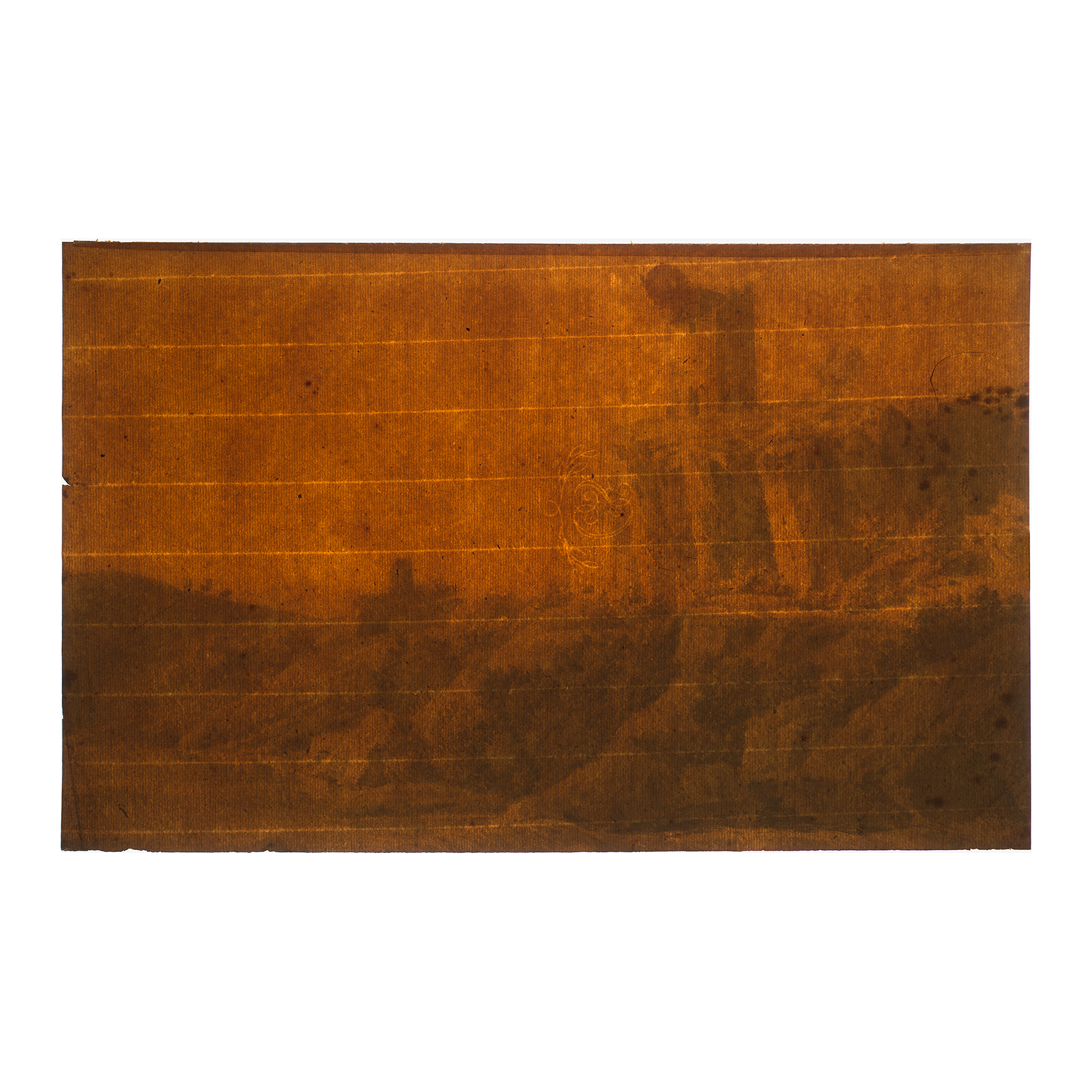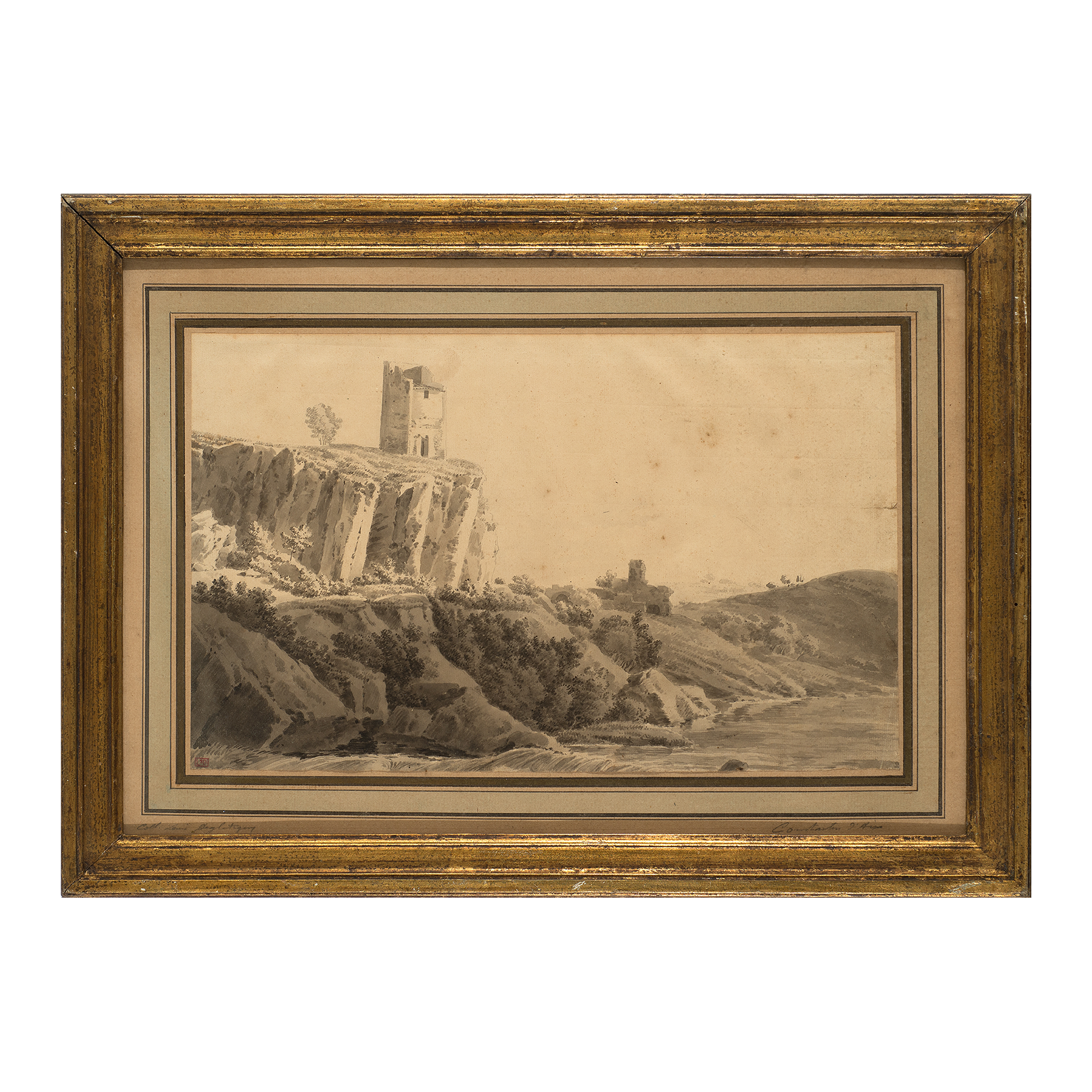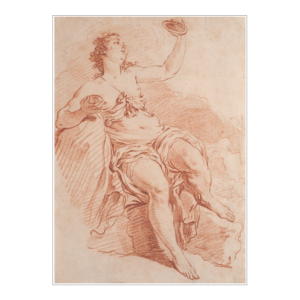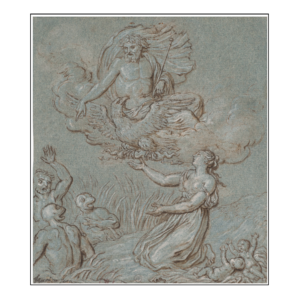Jean Antoine Constantin d’Aix
Marseille 1756 – Aix en Provence 1844
Landscape with a squared tower on a promontory, by a river
Brush and grey ink, grey wash, over traces of black chalk. Watermark with letters CS and branches. On an old mount with inscriptions Coll. Louis Deglatigny and Constantin d’Aix.
232 x 374 mm – 9 1/8 x 14 3/4 in.
Provenance: Louis Deglatigny, his stamp (Lugt 1768a) lower left
Born in Marseille, Constantin spent his career in Aix-en-Provence. He was sent to Rome by his patron M. Perron, where he first tried to paint, but quickly decided to concentrate on landscape drawing. His Roman stay was interrupted by severe fevers and he had to return to France less than three years later. There he ceaselessly painted and drew, landscape almost exclusively. Appointed director of the drawing school in Aix-en-Provence in 1787, Constantin taught François-Marius Granet and Auguste de Forbin, but the Revolution abolished his position. Made Professor at the Digne school during the Empire, he returned to Aix in 1813 where he settled definitively. Granet and Forbin supported him all his life, ensuring he was awarded the gold medal at the Paris Exposition of 1817, the title of Chevalier of the Legion of Honour in 1833 and a lifetime pension. Granet, who greatly admired Constantin, apparently said of him to Forbin: “He will always be the master. We are not worthy to unknot the laces of his shoes” (see A. Alauzen, La Peinture en Provence, Marseille, 1987, p. 181).
Much collected by Provencal families, Constantin is regarded as the “father of the Provencal painting”. Indeed, he contributed to the formation of a taste for landscape there but also more further afield through his pupils, many of whose careers were more widespread than his.
Constantin drew en plein air using wash to reproduce a chosen point of view as faithfully as possible, or pen to fill his numerous sketchbooks. He also liked to draw sites and townscapes, which he reworked in his studio sometimes combining brown and grey inks in a more elaborate fashion.
Condition report: A tear on the right edge.








